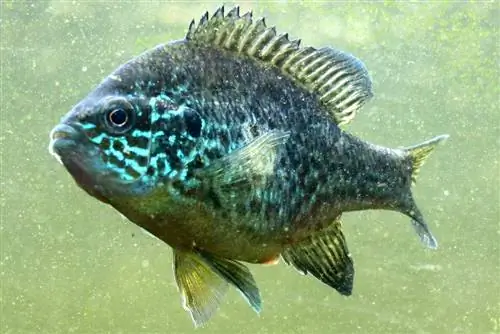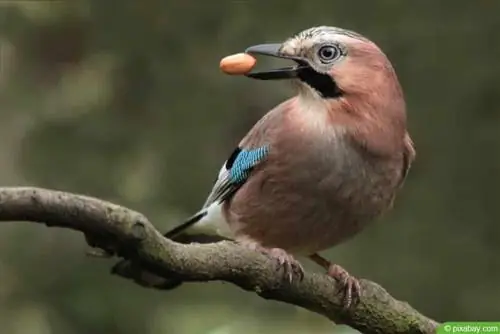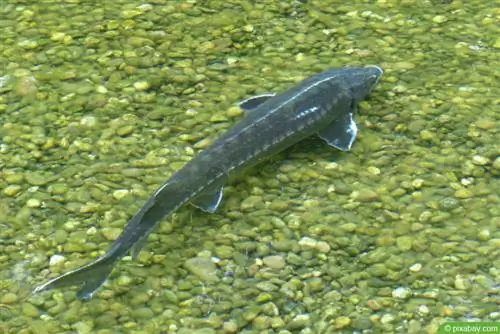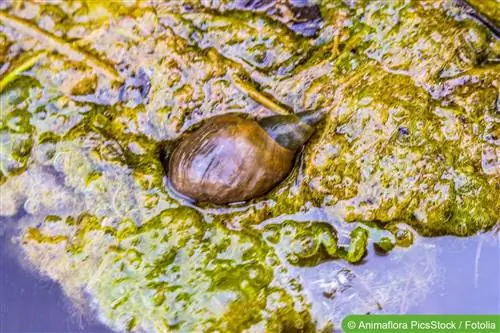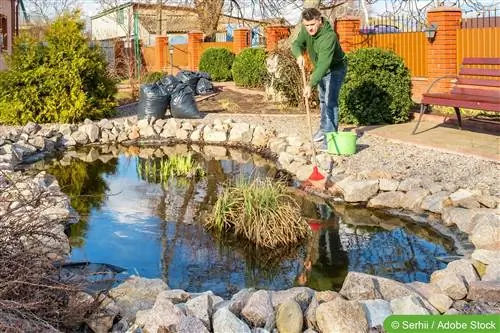- Author admin [email protected].
- Public 2023-12-17 03:39.
- Last modified 2025-01-24 12:45.
The sunfish is certainly an ornament for every garden pond. You can keep them there alone, in pairs or in company with other fish species. However, as a predatory fish it is not entirely unproblematic. It also places special demands on the pond and its food. And because the animal is also extremely keen on reproduction, nothing works without “birth control”. Here are a few tips:
Always only keep the common sunfish
Not all sunfish are the same. There are now a whole range of species under the family name. Many of them are ideal for a cold water aquarium, but not for the garden pond. The only option for this is the common sunfish, whose Latin name is Lepomis gibbosus. So if you're thinking about putting a sunfish in your pond, you should definitely ask a specialist retailer about this species. On the one hand it is extremely robust and on the other hand it is one of the less aggressive types of perch.
Note:
The sunfish gets along well with other types of fish. However, under no circumstances should it be kept in the pond with other species of perch, as this would lead to territorial disputes.
It's best to keep sunfish alone or with other fish species
Sunfish are not necessarily social fish species. They therefore do not feel comfortable within a swarm with other members of their species. They would see them as competition and a source of a lot of stress. It is therefore advisable to only keep one sunfish in a pond at a time. Although keeping them in pairs is at least theoretically possible, there is a risk that the animals will multiply excessively and it will then be very difficult to get the population under control. The best way to control birth is to make copulation impossible from the start. Although the sunfish, like all bass, is a predatory fish, it gets along relatively well with other fish species. However, it may be that he eats their spawn in the water.
Note:
The combination of koi with a sunfish has proven to be particularly successful. The koi in particular benefit from this, as Lepomis gibbosus reliably eats vermin that could be dangerous to them.
Correct pond depth & appropriate pond equipment
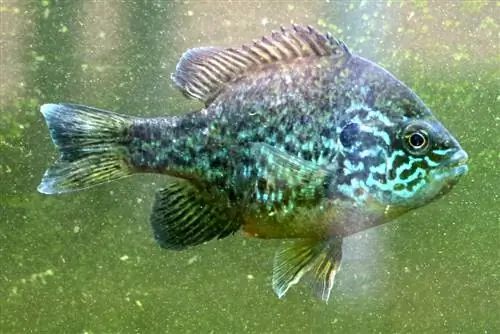
Hardly any garden owner will create a pond specifically for a sunfish. Rather, the pond will already exist and be stocked with other fish species. Whether Lepomis gibbosus feels comfortable there depends on whether the following factors are met:
- Pond depth of at least 70 cm
- several shallow areas with a maximum depth of 20 cm
- sandy soil if possible
- Hiding options such as stones or roots
- large, robust plants with lush foliage
- enough free space for swimming
- clear, preferably cold water
Because the sunfish prefers it fresh despite its name, a pond location that is constantly exposed to the sun is not recommended. This would cause the water to heat up quickly and too much, especially in summer. In such a case, however, bank planting with lush, shady grasses and shrubs can be helpful.
Keep an eye on water quality
Sunfish are extremely sensitive to changes. This is particularly true for the environment in which they live. They therefore do not cope well with changes in water quality. It is therefore important to ensure that the quality of the water always remains constant. The most important thing is
- that the water is clean and as free of contamination as possible,
- that it is well ventilated, especially in summer,
- and that the pH value is always greater than 7.0.
Note:
During the warm summer months, the sunfish's oxygen requirements increase enormously. As a rule, this can only be covered if oxygen is supplied using a pump.
Be sure to feed properly
You can't say it often enough: bass are predatory fish. Of course, this also applies to sunfish. As a result, he prefers living food above all else. You should therefore primarily feed live food. The following have proven to be ideal:
- mosquito larvae
- water fleas
- Tubifexe
- worms
- Flying
- Water snails
Live food can sometimes be purchased from specialist retailers. The food is added directly to the pond water. It is also possible to feed frozen food, which is usually easier to administer. Dry food, however, should remain the absolute exception. The sunfish will also use animal food that automatically settles in the pond. Even the leaves of the plants are not safe from him. If it is kept with other fish species, their spawn will definitely be part of its prey.
Always approach the pond very carefully

Sunfish are extremely skittish animals. They often react with panic to unforeseen, surprising events. They then flee and hide. This always means a lot of stress for the animals. You should therefore always approach the garden pond very carefully and quietly. Only then can you be guaranteed to see such a magnificent animal.
Proper wintering
Lepomis gibbosus can generally remain in the pond even during the winter months. However, it must have the necessary depth. The minimum is 70 cm, but a depth of around 1 m is better. The pond must also not freeze over completely. A closed ice cover prevents the entry of oxygen. If necessary, you have to break the ice cover regularly, even if that means scaring the sunfish. However, feeding them can safely be avoided during the winter. The animals reduce their metabolism so drastically that they do not need any additional food.
Alternative
Alternatively, the sunfish can also be moved to a cold water aquarium during the cold season. Since Lepomis gibbosus, as already mentioned, has problems with changes, this is not an entirely safe undertaking. It is always better to leave it in place and rather ensure a permanent open pond surface. It's also cheaper.

